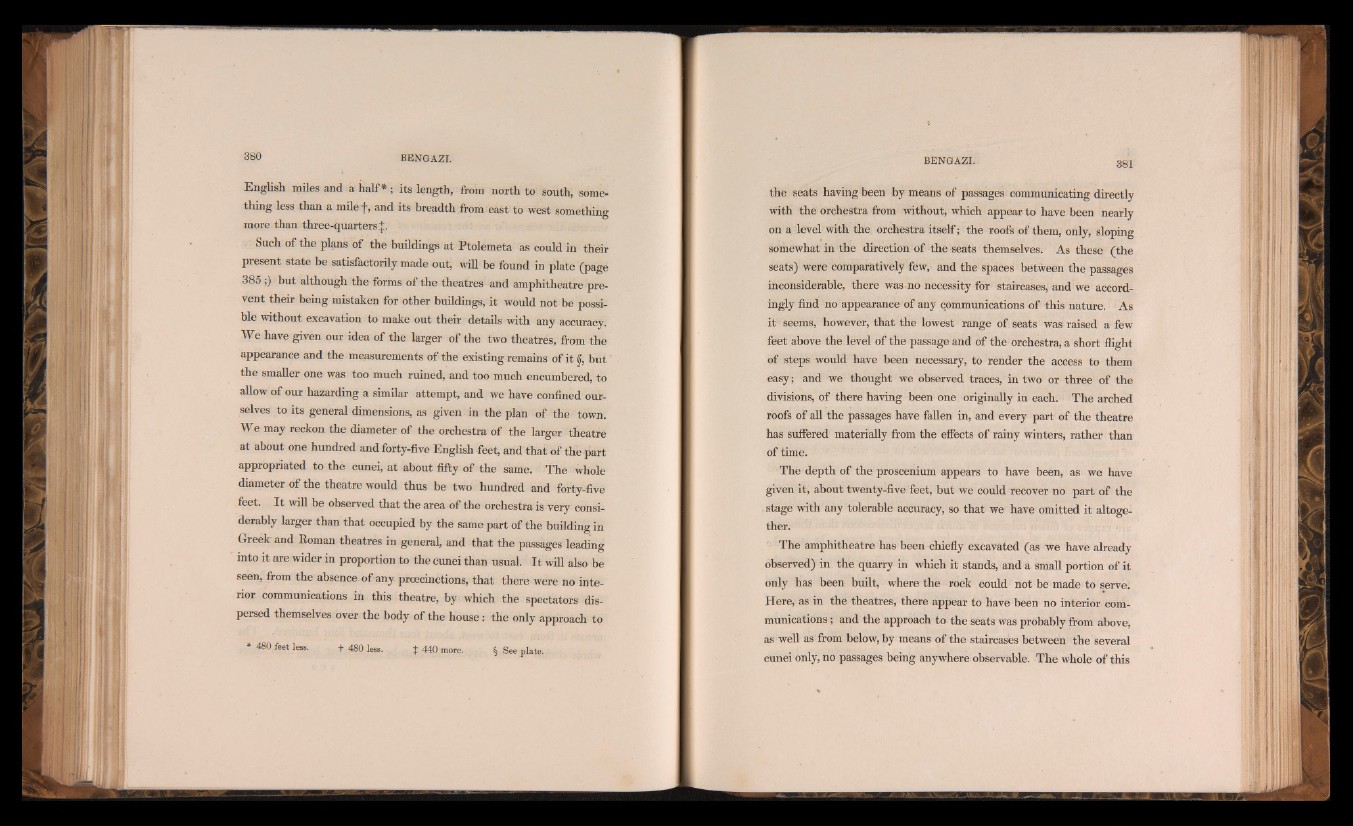
English miles and a half*; its length, from north to south, some-
thing less than a milef, and its breadth from east to west something
more than three-quarters
Such of the plans of the buildings at Ptolemeta as could in their
present state be satisfactorily made out, will be found in plate (page
385 ;) but although the forms of the theatres and amphitheatre prevent
their being mistaken for other buildings, it would not be possible
without excavation to make out their details with any accuracy.
We have given our idea of the larger of the two theatres, from the
appearance and the measurements of the existing remains of it §, but
the smaller one was too much ruined, and too much encumbered, to
allow of our hazarding a similar attempt, and we have confined ourselves
to its general dimensions, as given in the plan of the town.
We may reckon the diameter of the orchestra of the larger theatre
at about one hundred and forty-five English feet, and that of the part
appropriated to the cunei, at about fifty of the same. The whole
diameter of the theatre would thus be two hundred and forty-five
feet. I t will be observed that the area of the orchestra is very considerably
larger than that occupied by the same part of the building in
Greek and Koman theatres in general, and that the passages leading
into it are wider in proportion to the cunei than usual. I t will also be
seen, from the absence of-any proecinctions, that there were no interior
communications in this theatre, by which the spectators dispersed
themselves over the body of the house: the only approach to
* 480 feet less. + 480 less. J 440 more. § See plate. .
the seats having been by means of passages communicating directly
with the orchestra from without, which appear to have been nearly
on a level with the orchestra itself; the roofs of them, only, sloping
somewhat in the direction of the seats themselves. As these (the
seats) were comparatively few, and the spaces between the passages
inconsiderable, there was-no necessity for staircases, and we accordingly
find no appearance of any communications of this nature. As
it seems, however, that the lowest range of seats was raised a few
feet above the level of the passage and of the orchestra, a short flight
of steps would have been necessary, to render the access to them
easy; and we thought we observed traces, in two or three of the
divisions, of there having been one originally in each. The arched
roofs of all the passages have fallen in, and every part of the theatre
has suffered materially from the effects of rainy winters, rather than
of time.
The depth of the proscenium appears to have been, as we have
given it, about twenty-five feet, but we could recover no part of the
stage with any tolerable accuracy, so that we have omitted it altogether.
The amphitheatre has been chiefly excavated (as we have already
observed) in the quarry in which it stands, and a small portion of it
only has been built, where the rock could not be made to serve.
Here, as in the theatres, there appear to have been no interior com-
municatiens; and the approach to the seats was probably from above,
as well as from below, by means of the staircases between the several
cunei only, no passages being anywhere observable. The whole of this